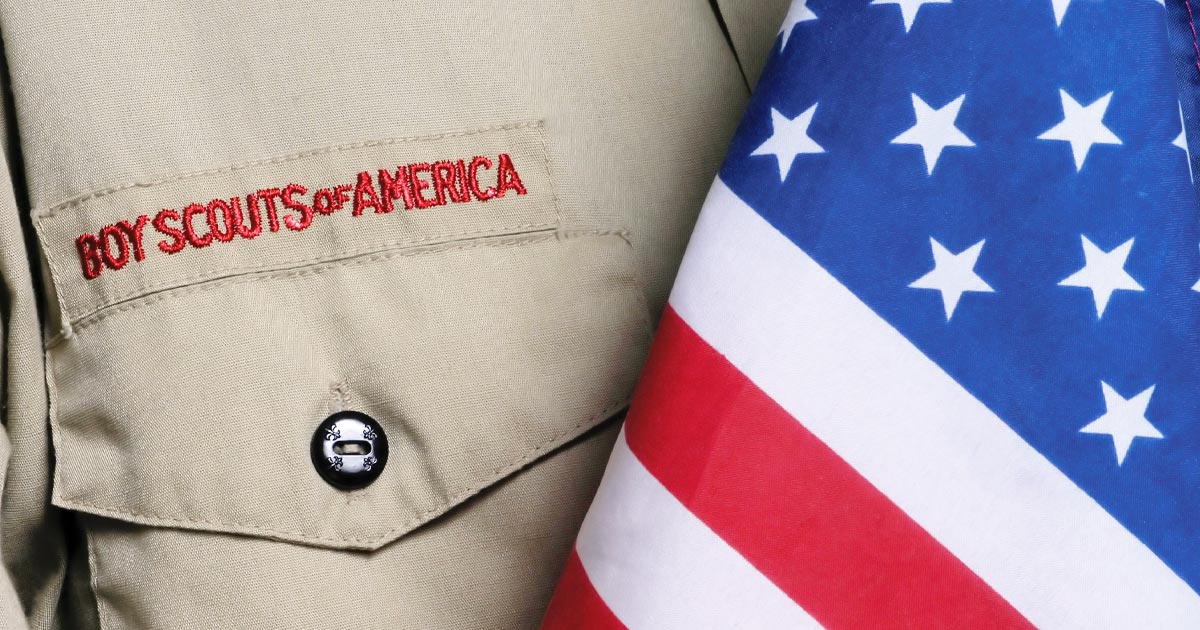By MICAEL J. OBER
Two by two, they plodded back to the bunkhouse, their snow-clogged boots thump, thumping on the steps leading to the door, announcing their disconsolate arrival.
“Close the door, whadda ya, born in a barn?” bellowed those huddled around the wood stove.
“Yeah. We’re not heatin’ the great outdoors here ya know.” And then, “Didja see any?”
“Shoot no. But we seen lots of tracks.”
“Yup, and I heard some too!” exclaimed Tommy.
“Pheasants, you idiot. Just pheasants,” scolded Jared.
“Fool’s errand,” muttered Steven from the back of the room.
By night’s end, the bunkhouse was filled with sodden scouts, the last of them arriving long after good sense had worn off, their failing flashlights barely able to penetrate the blackness that sunk into the depths of Beaver Creek. Kiwannis Camp was quiet now. Except for a random cough, the members of Troop 38, Havre Mont., hunkered down in their sleeping bags. Some, the younger believers, still clutched their small paper sacks.
By small town benchmarks, winter campouts are a big thing. And Kiwannis Camp has been a traditional destination of youth groups and church campers since the small cluster of cabins, pavilions, and bunkhouses had emerged back in the 30s as a result of the Civilian Conservation Corps’s earnest efforts to create a summer recreational area for Havre’s residents.
That particular winter, ca. 1955, was no different. The eager patrollers from BSA Troop 38 went forth for the weekend, laden with cans of pork and beans, hot dogs, stew, oatmeal, and mountains of mittens, long underwear, and wool caps. They tumbled from warm cars into the still cold and waddled under the weight of gear to their assigned quarters.
There is an unwritten pecking order in scoutdom that goes beyond the ranks of achievement from Tenderfoot to Second Class to First Class to Star and beyond. The bunkhouse pecking order usually ran along the lines of age groupings. The older scouts, for winter campouts at least, found their ways to the upper bunks where the air was warmer, secured the best chairs next to the stove, and ate the hottest food from the bottomless pot of beef stew. They never had to do dishes, either.
Those fresh from cub scouts occupied the berths adjacent to the ice cold floors, awaiting the day to move up.
Most of the rest of the troop that made the annual winter campouts at Kiwanis Camp were the small town blend of kids from rival grade schools. They generally knotted together by school; the Devlin kids and Sunnyside and Lincoln-McKinley boys bantering in good-natured challenges among themselves. The mix ran heavily to “rail” kids from dads who depended on their livings in the switching yards and locomotive shops. Some boys were from town merchant families or were sons from Northern Montana College employees. Farm kids never signed up … too far out to attend meetings and too busy with chores.
We had been instructed to work in two-person teams, the better to secure our prey, because it seemed that the snipes, cunning though they were, became helpless in the weak glare of our flashlights and crouched just long enough for one scout to nab ‘em while the other fixed the light on them.
We’d assumed that the paper bags were along to tuck them away securely for the triumphant return to the bunkhouse. Bernie and the other north-sider slunk silently out the door just as soon as it got dark.
The build-up to the hunt extended through Friday night, Saturday, and up to our communal campfire dinner Saturday evening.
All day Saturday, we plodded through desultory camp duties and skillcraft sessions. But each of us was savoring the tick, ticking minutes until we would be sent forth into the after-meal darkness to track down the elusive snipes, found only in Pacific Northwest coastal areas but known to be an occasional winter visitor to Montana.
Snipe hunting takes a little strategy. Just before departure, the various teams could be seen huddling around the stove for the last warm-up, muttering their plans before departure. As each team burst forth into the dark, our scout master grabbed Rob and me by the coat sleeves and whispered, “The early bird gets the worm, but the second mouse gets the cheese.” We held back.
When the rest of the troop had melted into the winter darkness, he counseled, “Move slowly alongside the creek to the east. Snipes aren’t quick to fly when there is no full moon.” Outside it was darker than a tar-papered coal bin at midnight.
“They need the moonlight to navigate by, ‘cause their eyesight is darn poor for a bird. And remember, if they do take flight, keep your flashlights on ‘em. They don’t fly far before they set. When they set, you gotta be ready to pounce. Now shove off.”
We toggled the switches on our official scout flashlights, mine a Christmas gift from my parents, Rob’s a hand-me-down from his brother, and slipped out the door.
Up creek, we could see the sporadic stabs of light from our fellow troop members. Muffled voices arose from the brush-choked bottomland. Beaver Creek was a local piece of lore and a destination for local recreationists. Its meandering curves marked slow time in the winter with everything in it sealed under a layer of ice; its summer burble providing a respite from the heat of Havre, 17 miles to the north.
Here in the state’s largest county park nestled our little Camp Kiwanis, a heroic effort at craftsmanship by numerous Havre service organizations. In the summer there was a small snack bar and resident caretaker. Come winter, county plows kept the road open to the camp itself and then shoved thick berms of snow against the walls of the uninsulated bunkhouses to keep Troop 38 boys and others like us warm.
For their part, the scoutmasters, all three of them, kept to themselves during our winter campouts. They had their own cabin nearby, rumored to be insulated. Camp chores and skill sessions were led by the older scouts. Back in town, at our Monday evening gathering place in the basement of the Lutheran Church, scoutmasters had diligently lined us up in our customary U-shaped formation to begin the meetings, one boy to every other square floor tile as we pledged allegiance to the flag and, with youthful high-pitched voices, recited as earnest members of the troop, “On my honor, I will do my best, for God and country …”
The scoutmasters had prepared us well for the winter outing with lessons on snipe anatomy and habitat.
“They’re not much bigger than a Hun,” declared Orville, the oldest of our leaders. He crouched down, cross-legged, encircled by scouts like a time-out basketball team around the coach. He looked wise and composed and seemed like he would know. And we believed him.
“They’re ground-nesters and don’t fly much. Only a few of ‘em end up here in Montana, where they over-winter. And this time of the year they make their winter nests in downed logs and stumps. When you get to camp, be lookin’ for signs right away.”
“What do they eat’?” inquired one boy.
“They use their long beak to peck away at the wood in the cambium portion of the logs, to secure frozen insects. And when they do go outside, which is only at night—‘cause you always see their tracks in the snow in the morning after a storm—they feed on berries, especially chokecherries. That’s where you might find ‘em.”
“What’s cambium?” blurted Kevin.
The final measure of young boys is to be found in the ways they address challenges. And solve problems. And accept defeat. Actual results seem almost inconsequential. Lessons learned and memories stored away for use later in life was probably on the minds of our scout leaders more that weekend than full paper bags. Yes, in the end, it seems like laughing at ourselves and our youthful vulnerabilities was just as important to personal survival as dressing warm. This much I do know. Snipe tracks bear an astonishing resemblance to pheasant tracks when seen in the light of a BSA flashlight. MSN











